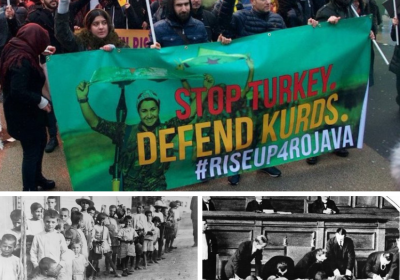This year marks the centenary of the signing of the Treaty of Lausanne. It gave tacit endorsement to the ethnic cleansing begun in the last years of the Ottoman Empire and was a disaster for the human rights of Kurds, Armenians, Greeks and Assyrians, living within the new borders it created, writes John Tully.
Armenian Genocide
The Turkish government has proposed a new law which will ban the use of the words and terms “Kurdistan”, “Kurdish city/cities” and “Armenian Genocide” in parliament.
Parliamentarians who use these words or terms will be fined 12,000 Turkish liras (about $4500) and be banned from participating in three sessions in the Grand Assembly.
Carrying placards, which opposition parties often do to criticise the ruling Justice and Development Party (AKP) government, will also be banned.
April 24, 1915, was the beginning of the slaughter 1.5 million Armenians by the Ottoman Empire in what is now Turkey. This set a dangerous precedent that has been copied and expanded upon by later despotic governments.
Despite its morbid place in world history, governments around the world, including major international powers, refuse to acknowledge that it ever happened.
The Inconvenient Genocide: Who Remembers the Armenians?
Geoffrey Robertson QC, Vintage Books,
Sydney, 294 pages, 2014
On the eve of Nazi Germany’s 1939 invasion of Poland, Adolf Hitler urged his generals “to kill without mercy men, women and children of the Polish race or language”.
“Only in such a way will we win [what] we need,” Hitler said. “Who, after all, speaks today of the annihilation of the Armenians.”
The Nazi leader was referring to the genocide carried out by the Ottoman Turkish empire in 1915 against the Armenian people within its borders.



